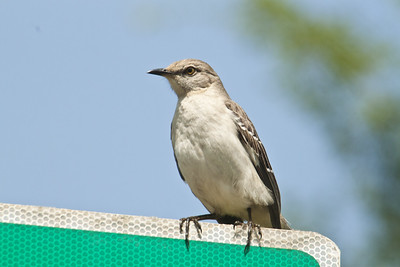
Last week I asked a friend, new to town, to meet me on the corner by Mockingbird Lane. I have been noticing mockingbirds more since the start of the pandemic—the bright flash of white tail feathers, the snippets of stolen songs. And I’d been to this corner many times—it’s the start of one of my favorite places to walk—but until I had to give someone directions, I’d never really noticed that particular name, on that particular sign.
Streets, particularly ones I know well, have a way of doing that to me. The words don’t mean the same thing as they do out in the real world, they’re connected instead with a particular stretch of tarmac, or the series of turns needed to get to a destination. As I started writing this, I started thinking about the streets I’ve lived on or near. Until about five minutes ago, I’d never associated a road called Grizzly Peak, a main thoroughfare in my childhood, with any living, breathing bear.
I ran through other familiar streets in my mind. Crow Canyon, Quail Hollow. Some of them I write on envelopes every December: Sun Eagle, Wren. The words seem beautiful, interesting, but they have never been birds to me. Some say the names of things show us what we’ve lost, others say they could be a way of marking what species are important to us. At their best, making an effort to name streets after local fauna (and flora) could generate pride–and perhaps, even spark an interest in protection, according to a 2018 study in PLOS.
I starting thinking about the birds we find on our street signs while reading Jennifer Moxley’s new book, For the Good of All, Do Not Destroy the Birds. In one of her essays, she describes growing up in San Diego among birds as cross-streets, from Albatross to Lark. Moxley, too, had an early disconnect between the street and what it described: “[T]o my young self, ‘Curlew’ conjured not the image of a sleek shorebird with a curved beak, but a perilously steep, snake-like road . . It was a hazardous gauntlet down, and an arduous, almost impossible climb back.”
She describes navigating girlhood by bird streets. And in her other essays, these birds come to life off reflective signs, and form another way to navigate the world. It may be arduous, but that’s where I’d like to climb to, too, to a place where roads direct me back to the world around me. Maybe we can meet there, on Mockingbird Lane, and these birds and their patchworks of song can start showing us the way.
*
Mockingbird photo by Flickr user Anne Davis 773 under Creative Commons license